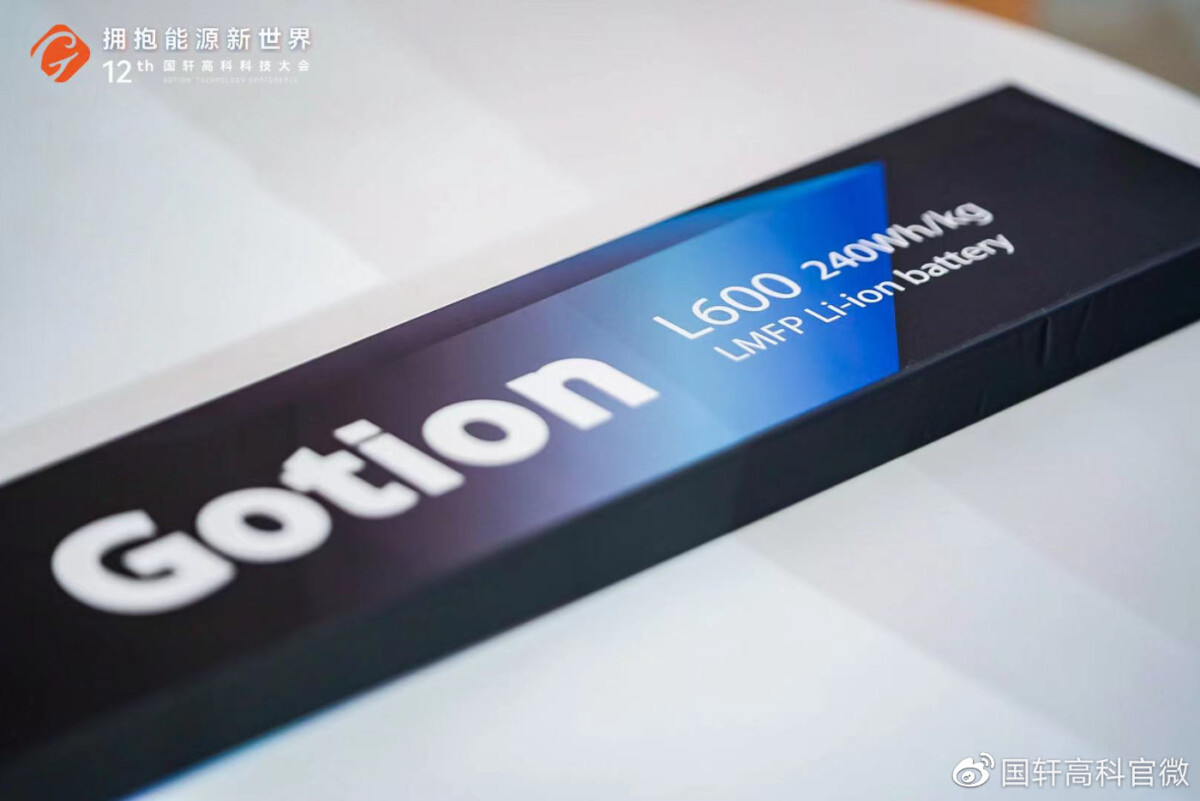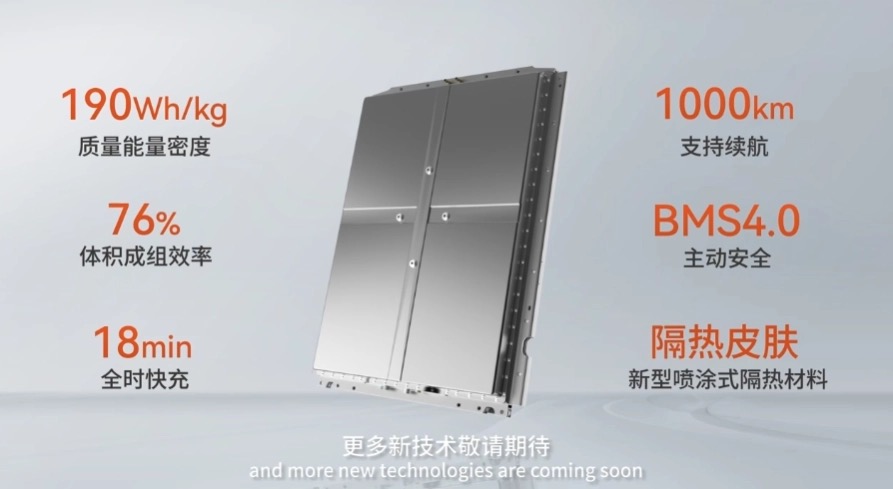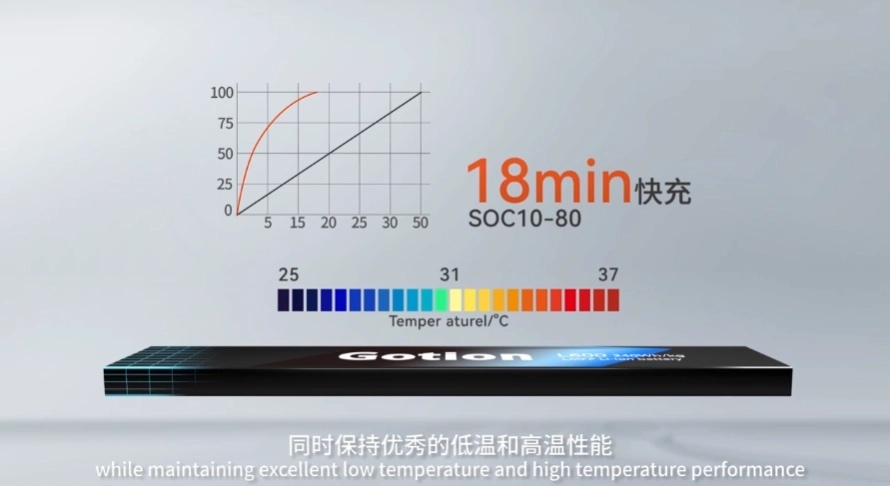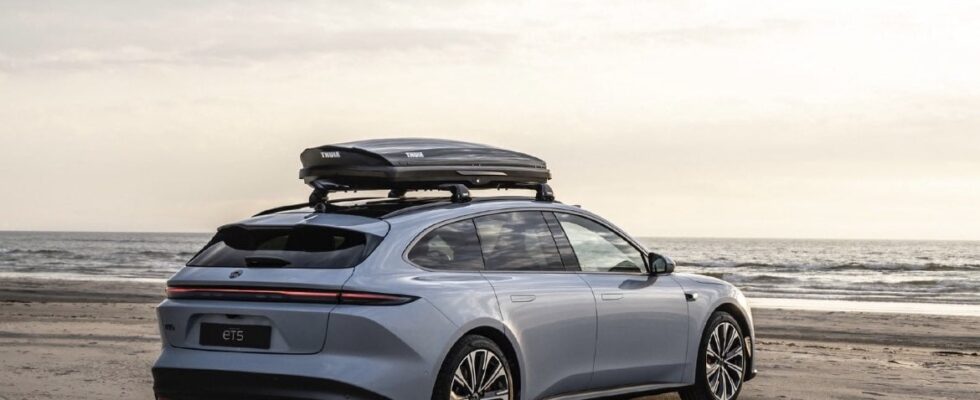Gotion, the Chinese battery giant for electric cars has just lifted the veil on a new lithium battery. It is the first that will allow cars to reach the 1000 km mark without using cobalt. It will also recharge very quickly. Expected arrival in a few months.
Electric cars announcing 1,000 km of theoretical autonomy are on the rise at the moment. We can mention the Zeekr 001 (which will soon arrive in Europe), but also the Nio ET7 that we had the chance to try a few months ago. Let us specify from the outset that this is the theoretical autonomy on the Chinese CLTC certification cycle, more optimistic than our European WLTP. To switch from one to the other, you should expect a difference of about 10 to 15%.
1,000 km… but with cobalt
To achieve this record autonomy, the Nio ET7 (and its little sister the Nio ET5) has a semi-solid battery with a capacity of 150 kWh (which will be available this summer in China and later in Europe), while the Zeekr 001 has a more classic 140 kWh battery. We can also mention the Lucid Air, with its 883 km of autonomy (on the European WLTP cycle this time), with its smallest battery of 118 kWh.

In all three cases, the batteries use cobalt to increase their energy density. As we saw recently with Tesla, cobalt is sometimes the subject of misunderstanding and misinformation, with in particular the role of children in the extraction of this material.
New cobalt-free batteries
This is where the LFP batteries come in (widespread for a few months), which still use lithium, but not cobalt. They are found in many electric cars, and in particular the Tesla Model 3 and Model Y in the Propulsion version. Their biggest drawback is their energy density, which is lower than more conventional lithium batteries, such as NCA (Nickel-Cobalt-Aluminum) and NMC (Nickel-Manganese-Cobalt). This means that they store less energy at equivalent volume and weight.

But the Chinese giant Gotion, specialist in batteries, seems to have found a solution, to create a large LFP battery to reach 1,000 km theoretical autonomy of the Chinese cycle. To successfully increase the energy density of this LFP battery, the firm uses manganese, which gives LMFP (lithiul-iron-manganese-phosphate), without cobalt, as can be read in the press release published on Weibo and relayed by the Chinese media IT Home.
This would then result in a volume density of 525 Wh/L and a mass density of 240 Wh/kg. If we take into account the entire battery pack (including the cooling system), the density would reach 190 Wh/kg. Which would be more than Tesla’s “revolutionary” 4680 batteries and more than any battery currently on the market.
Ultra-fast charging and ultra-long battery life
Fast charging has not been forgotten, since it would only take 18 minutes to go from 10 to 80% battery. That’s exactly the time it takes the Hyundai Ioniq 5, Ioniq 6 and Kia EV6 to recharge, thanks to their 800-volt architecture. But it is slower than the 10 minutes of the Qilin 3.0 from CATL or that from Sunwoda Power.

Battery life is given for 4,000 cycles (charge/discharge) at room temperature and 1,500 cycles when charged ultra-fast. which gives almost 1.5 million km service life with a car that only charges with high-power terminals. This corroborates Tesla’s data on the life of its batteries. The battery would also be resistant to thermal runaway (and therefore would not catch fire).
The Gotion L600 battery would start mass production in 2024, and could therefore be found on production electric cars as early as next year.
To follow us, we invite you to download our Android and iOS application. You can read our articles, files, and watch our latest YouTube videos.
